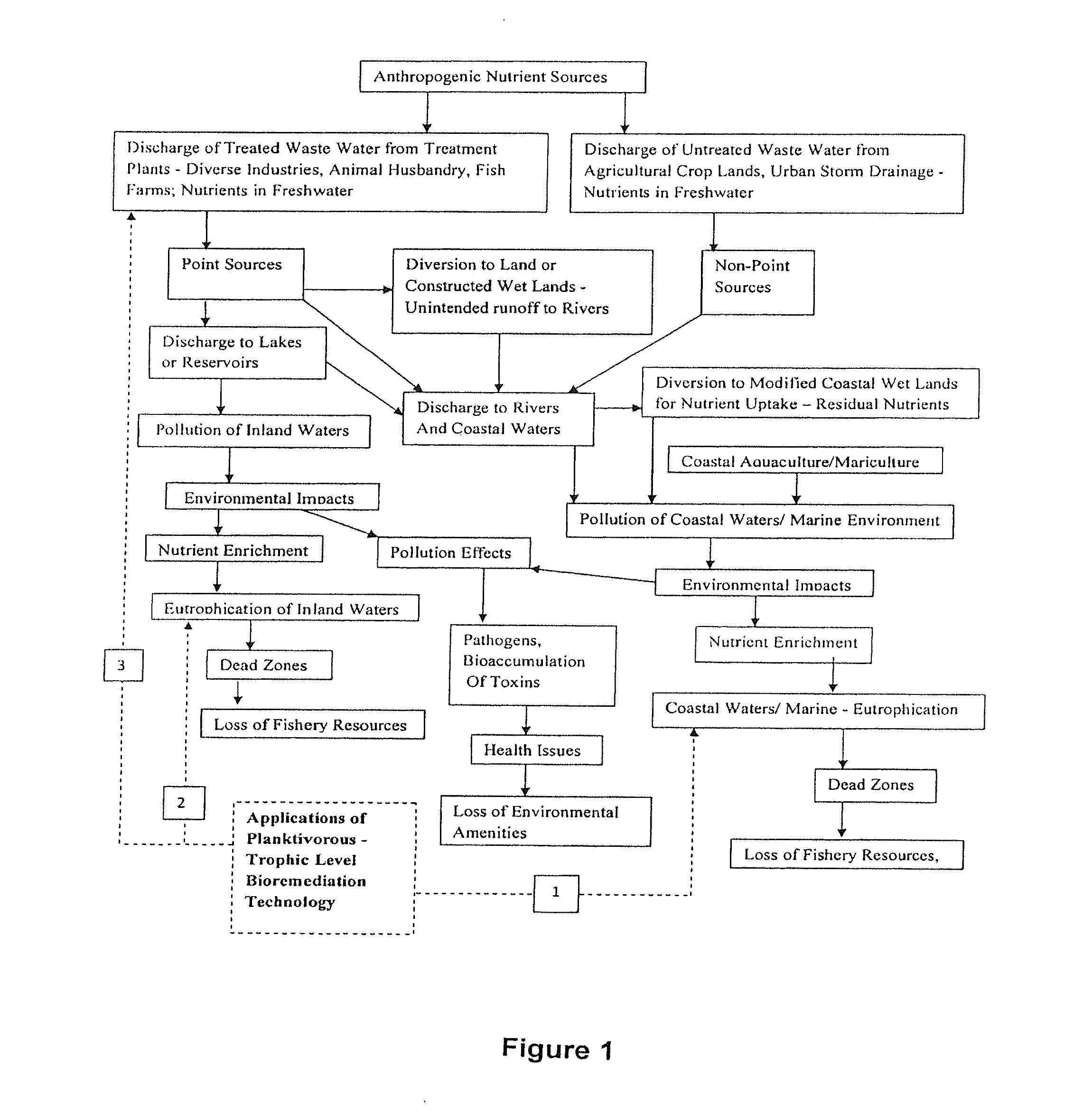Systems and methods for reducing algal biomass
a technology of algal biomass and systems, applied in the field of systems and methods for reducing algal biomass, can solve the problems of harmful algal bloom, increase in algae biomass, hypoxia,
- Summary
- Abstract
- Description
- Claims
- Application Information
AI Technical Summary
Benefits of technology
Problems solved by technology
Method used
Image
Examples
Embodiment Construction
[0017]The over-enrichment of water by nutrients, referred to herein as “eutrophication” degrades many aquatic ecosystems worldwide. The current conceptual model of eutrophication recognizes an interacting set of direct and indirect responses of an aquatic ecosystem to nutrient enrichment. Nutrient input stimulates accumulation of phytoplankton biomass, followed by vertical flow of algal-derived organic matter to bottom waters and the sediments, decomposition of the organic matter by bacteria which use up the available dissolved oxygen. Indirectly, eutrophication affects water transparency, distribution of vascular plants and biomass of macroalgae, nutrient cycling, nutrient ratios, plankton community composition, frequency of toxic / harmful algal blooms, habitat quality for metazoans, and reproduction / growth / survival of pelagic and benthic invertebrates. (2001, Cloern, Our evolving conceptual model of the coastal eutrophication problem, Mar Ecol Prog Ser 210:223-253). FIG. 1 shows so...
PUM
| Property | Measurement | Unit |
|---|---|---|
| sizes | aaaaa | aaaaa |
| sizes | aaaaa | aaaaa |
| sizes | aaaaa | aaaaa |
Abstract
Description
Claims
Application Information
 Login to View More
Login to View More - R&D
- Intellectual Property
- Life Sciences
- Materials
- Tech Scout
- Unparalleled Data Quality
- Higher Quality Content
- 60% Fewer Hallucinations
Browse by: Latest US Patents, China's latest patents, Technical Efficacy Thesaurus, Application Domain, Technology Topic, Popular Technical Reports.
© 2025 PatSnap. All rights reserved.Legal|Privacy policy|Modern Slavery Act Transparency Statement|Sitemap|About US| Contact US: help@patsnap.com


